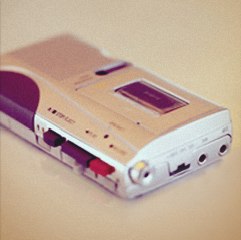You know the office is changing when old school executives tell you they work from home. They might go into the office to check in but often they are either working out of the house or out on the road. It’s just the reality of the new work world.
LinkedIn today is illustrating this trend as part of its “Office Endangered Species,” study of more than 7,000 professionals that looked at what office tools and trends will most likely go away by the year 2017.
Here are the top 10:
1. Tape recorders (79 percent)
2. Fax machines (71 percent)
3. The Rolodex (58 percent)
4. Standard working hours (57 percent)
5. Desk phones (35 percent)
6. Desktop computers (34 percent)
7. Formal business attire like suits, ties, pantyhose, etc. (27 percent)
8. The corner office for managers/executives (21 percent)
9. Cubicles (19 percent)
10. USB thumb drives (17 percent)
The technologies and trends that people say more often represent their work life:
- Tablets (55 percent)
- Cloud storage (54 percent)
- Flexible working hours and smartphones (which tied at 52 percent)
And here are a few “dream” things people would like to see more part of the office experience:
- A clone or assistant to help during the workday (25 percent)
- A place in the office that provides natural sunlight (25 percent)
- A quiet place in your office where you’re allowed to take a nap (22 percent)
- And a mute button for their co-workers, so they don’t have to hear them talk.
The trend in cloud storage use is a noteworthy reminder that the core of what we do relies on the information that we create, share and act upon. Sales leads, project management items and IT policies are all examples of documents that people can use cloud storage to manage. They can look at those documents on their tablets and use smartphones to email with colleagues.
The tape recorder? That’s just an early example of what we have become. Items like the desk phone are not primitive. They’re just artifacts of our analog past.
And the robots? They’re coming fast.
